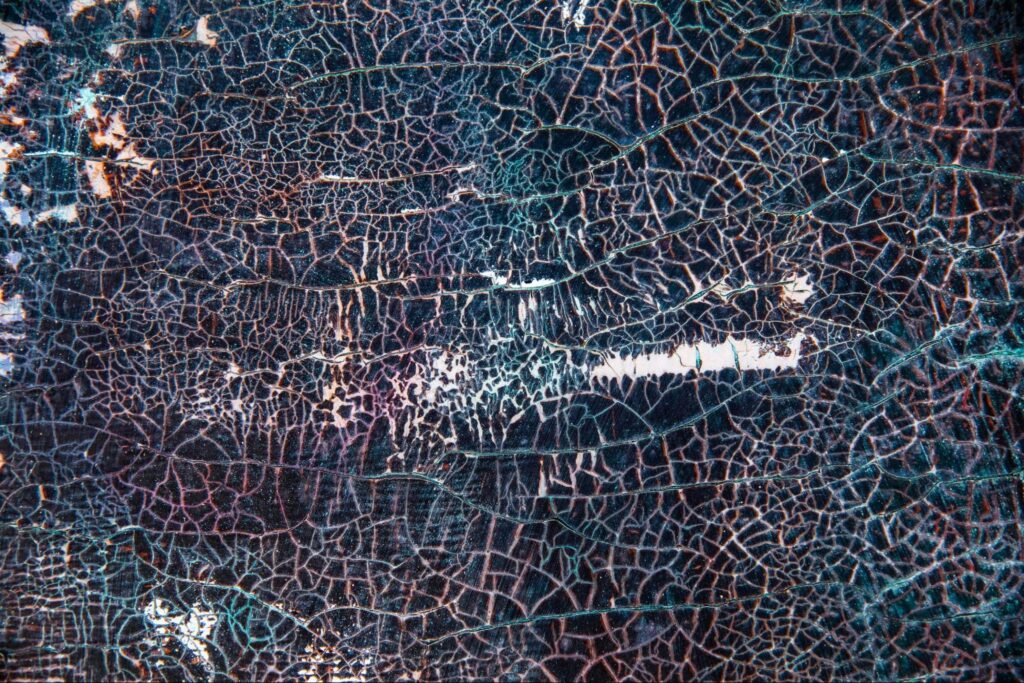Tempered window film is an innovative solution that enhances the safety and durability of glass surfaces. Designed to withstand impact and protect against UV rays, this film is becoming increasingly popular in both residential and commercial settings. In this article, we will explore the basics of tempered window film, its safety benefits, installation process, maintenance, and durability, as well as how to choose the right film for your needs.
Understanding the Basics of Tempered Window Film
What is Tempered Window Film?
Tempered window film is a specialized adhesive film that is applied to glass surfaces to reinforce their strength and safety. It is made by applying multiple layers of polyester film and laminate coatings, which are then bonded to the glass surface using a strong adhesive. Through this process, the film forms a protective barrier that increases the glass’s resistance to impact and shattering.
Tempered window film not only enhances the structural integrity of glass but also provides additional benefits such as UV protection, heat reduction, and glare reduction. The film can be customized in terms of thickness and tint to suit different needs, making it a versatile solution for various applications, from residential windows to commercial buildings.
The Science Behind Tempered Glass
To fully grasp the benefits of tempered window film, it’s essential to understand the science behind tempered glass. Tempered glass is created by subjecting standard glass to a heating and cooling process called ‘tempering.’ During tempering, the glass is heated to a high temperature and then rapidly cooled, causing the outer surfaces to cool and contract at a faster rate than the inner core. This process establishes tension within the glass, resulting in a significantly stronger and more durable material.
When tempered glass does break, it shatters into small, granular pieces instead of sharp shards, reducing the risk of injury. The addition of tempered window film further improves the safety of this glass by holding the shattered fragments together, preventing them from causing harm.
Tempered glass is commonly used in applications where safety is a top priority, such as in car windows, shower doors, and glass railings. Its ability to withstand higher impact forces compared to standard glass makes it a preferred choice in environments where breakage could lead to serious consequences. By combining tempered glass with window film, the overall safety and security of the glass are significantly enhanced, providing peace of mind to property owners and occupants alike.
The Safety Benefits of Tempered Window Film
Impact Resistance and Shatter-Proof Qualities
One of the primary safety benefits of tempered window film is its ability to enhance the impact resistance and shatter-proof qualities of glass. By adding a layer of film to the surface, the glass becomes less susceptible to breakage from accidental impacts or deliberate force. In the event of breakage, the film holds the shattered pieces together, reducing the risk of injury caused by flying glass fragments.
Moreover, tempered window film can also provide an added layer of security against forced entry. The film makes it more difficult for intruders to break through the glass, acting as a deterrent to potential burglaries or vandalism. This added security feature can give homeowners and business owners peace of mind, knowing that their property is better protected.
Protection from UV Rays
Another crucial safety benefit of tempered window film is its ability to protect against harmful UV rays. UV rays can be damaging to both human health and the interior of buildings. Tempered window film offers a high level of UV protection, blocking up to 99% of the sun’s harmful UV rays. This protection helps prevent the fading of furniture, artwork, and flooring, while also reducing the risk of skin damage and other health concerns caused by prolonged exposure to UV rays.
Additionally, the UV protection provided by tempered window film can contribute to energy efficiency by reducing the heat gain inside a building. This can lead to lower cooling costs during hot summer months, as the film helps to maintain a more stable and comfortable indoor temperature. By reducing the reliance on air conditioning, tempered window film not only enhances safety but also promotes environmental sustainability.
Installation Process of Tempered Window Film
Preparing the Glass Surface
The installation process of tempered window film involves several crucial steps to ensure a successful application. The first step is preparing the glass surface, which is essential for the longevity and effectiveness of the film. Cleaning the glass is a meticulous process that requires attention to detail. Using a non-abrasive cleaner and a lint-free cloth, thoroughly remove any dirt, dust, or fingerprints that could hinder the film’s adhesion. This step not only improves the aesthetic appeal of the installation but also ensures a strong bond between the film and the glass.
Moreover, before applying the film, it is recommended to inspect the glass surface for any imperfections or damages. Addressing any issues beforehand can prevent complications during the installation process and enhance the overall durability of the tempered window film.
Applying the Film
With the glass surface meticulously cleaned and inspected, the next step in the installation process is applying the tempered window film. Precision is key during this stage to achieve a flawless result. Begin by measuring and cutting the film to the exact dimensions required, leaving a slight overlap on all edges for a seamless finish. To facilitate smooth adhesion and minimize air bubbles, create a solution of water and liquid soap to moisten the glass surface before applying the film.
When positioning the film on the glass, ensure it aligns perfectly with the edges to maintain a uniform appearance. Using a squeegee or a similar tool, carefully remove any excess water and air trapped beneath the film. This step not only ensures a secure attachment but also enhances the optical clarity of the tempered window film. Finally, trim any surplus film with precision to achieve a professional and polished look that enhances the aesthetic appeal of the glass surface.
Maintenance and Durability of Tempered Window Film
Cleaning and Care Tips
To maintain the optimal performance and longevity of tempered window film, it is important to follow proper cleaning and care practices. Clean the film regularly using a mild, non-abrasive cleaner and a soft cloth or sponge. Avoid using harsh chemicals, abrasive materials, or sharp objects that could scratch or damage the film. Additionally, refrain from using adhesive tape on the film, as it can cause the film to peel or discolor over time.
When cleaning tempered window film, it’s essential to start by removing any dust or debris with a gentle wipe using a microfiber cloth. This initial step prevents particles from scratching the film during the cleaning process. For stubborn stains, consider using a solution of mild soap and water to gently cleanse the surface. Remember to avoid excessive scrubbing, as this can wear down the film’s protective coating and reduce its effectiveness over time.
Lifespan of Tempered Window Film
The lifespan of tempered window film depends on various factors, including the quality of the film and the environment in which it is installed. Typically, high-quality films can last anywhere from 10 to 15 years or more with proper maintenance. However, external factors such as extreme weather conditions, frequent exposure to direct sunlight, or physical impacts may impact the lifespan of the film. Regular inspections and maintenance can help identify any issues and ensure the film continues to provide optimal safety and performance.
It’s important to note that the lifespan of tempered window film can also be influenced by the expertise of the installation process. Proper installation by trained professionals ensures that the film adheres securely to the glass surface, minimizing the risk of premature peeling or bubbling. Investing in professional installation not only enhances the longevity of the film but also guarantees a seamless and aesthetically pleasing finish for your windows.
Choosing the Right Tempered Window Film
Factors to Consider
When selecting tempered window film for your specific needs, it is essential to consider several factors. These include the level of impact resistance required, the desired level of UV protection, the appearance of the film, and any specific performance features such as heat reduction or privacy. Additionally, it is beneficial to evaluate the reputation and reliability of different brands and products on the market. Consult with a professional installer or supplier who can provide guidance based on your specific requirements.
One important factor to consider when choosing tempered window film is the level of impact resistance required. This will depend on the location and purpose of the glass surface. For example, if you are installing the film on a storefront window in a high-crime area, you may want to opt for a film with a higher level of impact resistance to deter break-ins and protect against vandalism. On the other hand, if you are installing the film on a residential window, you may not require the same level of impact resistance.
Another factor to consider is the desired level of UV protection. UV rays can cause fading and damage to furniture, flooring, and artwork. Therefore, it is important to choose a film that offers a high level of UV protection. Look for films that are specifically designed to block out a significant percentage of UV rays, such as those with a UV rejection rate of 99% or higher.
Popular Brands and Products
There are various reputable brands and products available for tempered window film. Some popular options include 3M, LLumar, SolarGard, and Hanita Coatings. These brands offer a wide range of film options designed to enhance safety, durability, and aesthetics. It is advisable to research and compare different brands and products to find the one that best meets your needs and budget.
When researching different brands and products, consider factors such as the warranty offered, customer reviews, and the reputation of the manufacturer. Look for brands that have been in the industry for a significant amount of time and have a proven track record of producing high-quality window films. Additionally, consider reaching out to professionals in the industry for their recommendations and insights.
Conclusion:
Tempered window film is a valuable solution for enhancing the safety and durability of glass surfaces. By reinforcing the glass with this specialized adhesive film, the impact resistance, shatter-proof qualities, and UV protection of the glass are significantly improved. The installation process, maintenance tips, and factors to consider when choosing the right film have been discussed to help you make informed decisions. Consider consulting with professionals and researching reputable brands and products to ensure you select the most suitable tempered window film for your specific needs. Implementing this innovative solution can provide invaluable peace of mind and protection in both residential and commercial settings.


